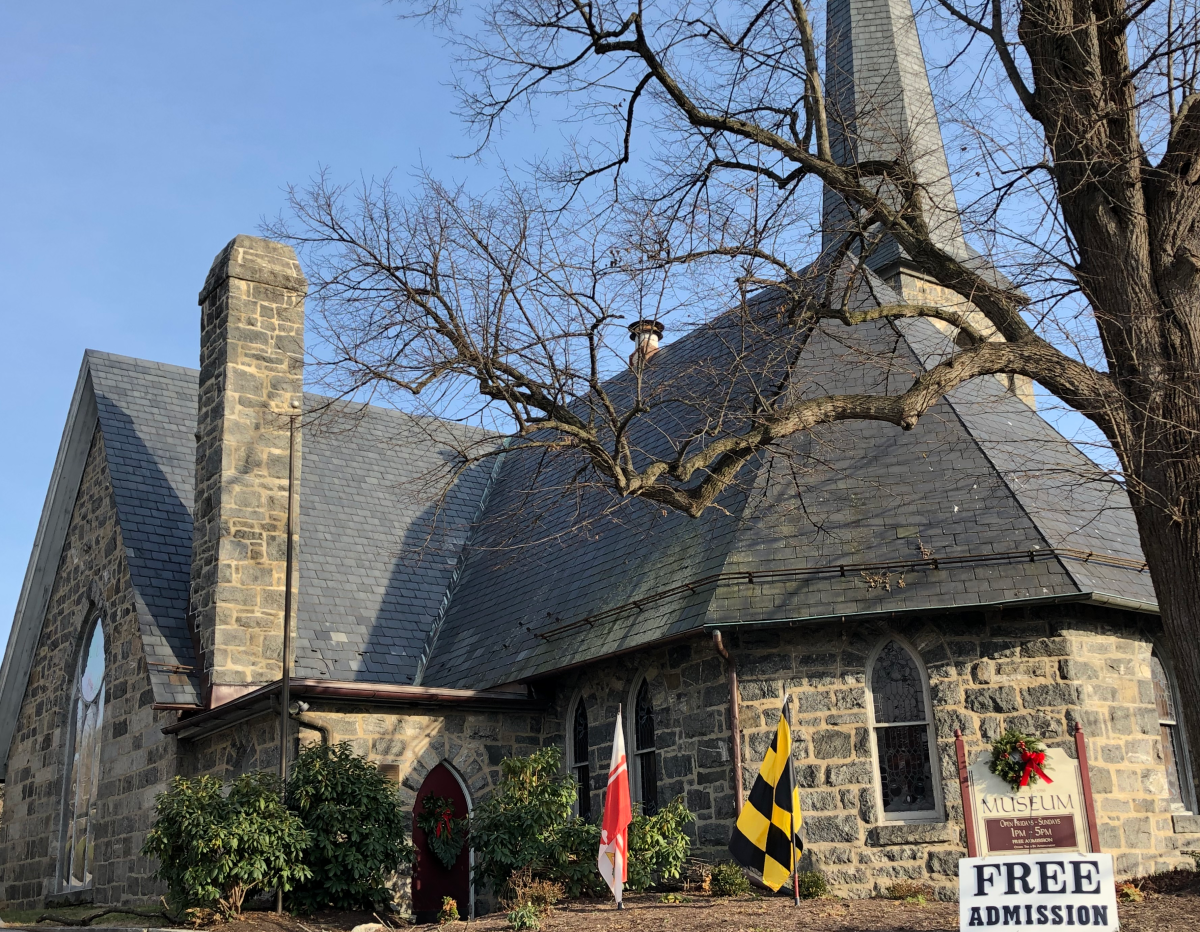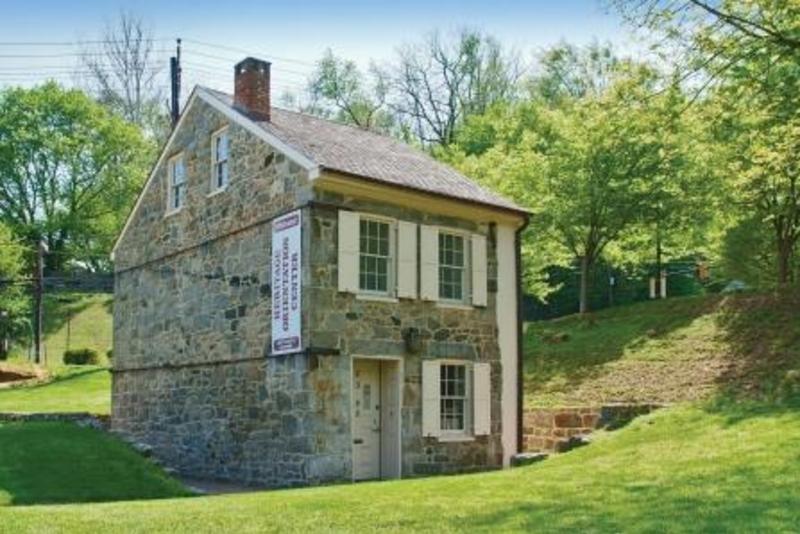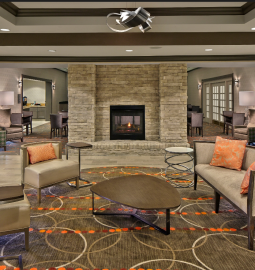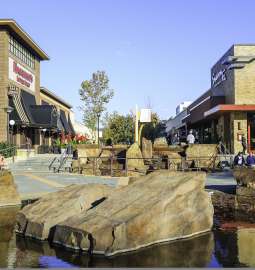Howard County’s Network to Freedom and Underground Railroad sites:
The Howard County Center of African American Culture has curated The Simpsonville Freetown Legacy Trail to celebrate the history of Simpsonville and commemorate the involvement of Harriet Tubman in the Underground Railroad.
Some of the sites include:
Locust Cemetery - Oral History says that Harriet Tubman and fleeing slaves hid and rested at the gravesites. The Cemetery is located at the corner of Harriet Tubman Lane and Freetown Road
Middle Patuxent Creek - At the bottom of the hill, on the south side of Rt. 32 and Cedar Lane in “Old Freetown” sit the Middle Patuxent Creek. Next to the bank of this creek, Tubman and others are said to have hidden from the Slave Raiders.
Freetown Road - It is reported that in 1845, a slave owner, Nicholas Washington, upon his death, freed his 17 slaves and gave them 150 acres of land. This was part of the tract of land called “Atol Enlarged” which became known as “Freetown” Old “Freetown” was originally bound by Cedar Lane down 216, and continued up around Howard Community College and over to Owen Brown. Today all that is left of the original tract is Freetown Road, the Harriet Tubman portion of Guilford Road, and the Locust United Methodist Church and Cemetery.
The full list and info on the trail, as well as artifacts and belongings of Harriet Tubman, can be found at the Howard County Center of African American Culture Museum
Howard County Center of African American Culture
Museum & Children's Library
5434 Vantage Point RD, Columbia, MD 21044
410-715-1921
Howard County Historical Society Museum
9421 Frederick Road Ellicott City, MD 21042
410-480-3250
Howard County Historical Society Museum the museum includes exhibits about people who escaped from slavery in Howard County. 
The 1843 Howard County Courthouse was the location for judicial proceedings for cases of those charged with encouraging slaves to run away. The most famous case involved the transfer of known Underground Railroad agent William L. Chaplin of New York from Montgomery County to Howard County in 1850. An interpretive marker describes these events. 
Howard County Courthouse 1843
8360 Court Avenue Ellicott City, MD 21043
410 313-2111
Adjacent to the Thomas Isaac Log Cabin is the site of Howard County's first courthouse, from 1840-1842. At the time, Howard was not a separate county but instead a district within Anne Arundel County. Two sessions were held per year - one in the spring and one in the fall. The building dates to approximately the 1820s and was owned by the Ellicott family, who leased the building as a courthouse while the current Circuit Court was being constructed. When that court house opened in 1843, this building returned to use as a residential dwelling. In 2015, the site was recognized on the National Park Service's Network to Freedom for the cases heard involving anti-slavery sentiments and actions. During the May 27, 2018 flash flood that occurred on Main Street, this building was lost. Remnants of the Network to Freedom exhibit are now housed at the B&O Ellicott City Station Museum. There are no current plans to rebuild. 
Howard County First Courthouse Site
Ellicott Mills Drive at Main Street, Ellicott City, MD 21043
410-313-0421
Runaway slaves and those charged with encouraging them were held in the county jail. 
Howard County Jail
1 Emory Street Ellicott City, MD 21043

In 1998, legislation titled the National Underground Railroad Network to Freedom Act of 1998 was passed, creating the Network to Freedom program. Its mission is to honor, preserve and promote the history of resistance to enslavement through escape and flight, which continues to inspire people worldwide. Through its mission, the Network to Freedom helps to advance the idea that all human beings embrace the right to self-determination and freedom from oppression.
Additionally, Maryland has great statewide tourism products about the Underground Railroad to assist travelers with planning their trips and to provide information along the way:
Maryland’s Underground Railroad Network to Freedom Visitor Guide
Harriet Tubman Underground Railroad Scenic Byway Map, Guide, and Audio Guide
Frederick Douglass Driving Tour Map
AFRICAN AMERICAN HERITAGE SITES
The Ellicott City Colored School Restored
8683 Frederick Rd., Ellicott City, Maryland
410-313-0421
This schoolhouse was built in 1880 as the first school for African American students paid for with County funds. The school was open from the 1880s to 1953. The schoolhouse is now a museum and chronicles African American history in Howard County, particularly the era of segregation and the various segregated schoolhouses that existed in Howard County. Tours, programs, lectures and summer camps take place at the museum today.
Benjamin Banneker Historical Park & Museum Museum
300 Oella Ave., Catonsville, MD 21228
410-887-1081
A 142-acre site dedicated to telling the inspiring story of the life and times of Benjamin Banneker often considered the first African American man of science. The museum’s exhibits chronicle Banneker’s contributions as a largely self-taught mathematician, astronomer, almanac writer, surveyor, abolition advocate and naturalist during the late 1700s. Programs are focused on Banneker’s life and his relationship to the land he inhabited.
African Art Museum of Maryland
8775 Cloudleap Court, Suite 12, Columbia, MD 21045
410-740-7411
The African Art Museum of Maryland (AAMM), founded in 1980 as the first Museum in the planned community of Columbia, MD, is unique. It is one of only three museums of its kind in the USA devoted exclusively to the art of Africa. Of those three, it is the only one founded by an African American. Among other supports, it has been recognized as “one of the State’s most respected cultural institutions,” and in 2013 was cited as “one of the top ten places to visit in Howard County, MD.”
Elkridge Furnace Inn
5745 Furnace Ave, Elkridge, MD 21075
(410) 379-9336
Elkridge Furnace was a large iron furnace in colonial Maryland that used enslaved, indentured and convicted labor for some of its operations. At least five people escaped from the site, some of whom were recaptured and punished, but continued the pursuit of freedom.
Baltimore & Ohio Ellicott City Station Museum
3711 Maryland Ave., Ellicott City, MD 21043
410-313-1945
Designated a National Historic Landmark in 1968, the B&O Ellicott City Station is the oldest surviving railroad station in the country playing an important role in the Civil War. Today the site interprets the story of transportation and travel through exhibits, including an augmented reality experience, education programs and living history programs. The site temporarily houses the Network to Freedom Howard County First Courthouse Site marker.
Civil War Trail Sites
Civil War Trails® has been working with communities since 1994 to share their stories and connect visitors with small towns and big stories across a network that now spans six states. Travelers look to Trails to put them in the footsteps of the generals, soldiers, citizens, and the enslaved who found themselves in the midst of this Civil War.
-
Ellicott City Colored School – After the war, African American veterans built this school.
-
B&O Railroad Station – The oldest railroad terminus in the U.S. (1831) was guarded by Union troops throughout the war. Is a free museum today.
-
Patapsco Female Institute – This is the site of an important school that influenced young ladies of the North and South. Is a park and event venue today.
-
Oakland Manor – Brothers Moses, William, and Joseph Shipley were slaves who labored here and on neighboring farms. Is an event venue today.
-
Savage Mill – This cotton-weaving mill was used for Federal service. Is a complex of specialty shops and restaurants today surrounded by a park and river trail.
-
Thomas Viaduct - The strategic B&O Railroad bridge to Washington placed two towns in the theater of war. Is located in the Orange Grove Area of Patapsco Valley State Park.
Learn more about Civil War Trails here.





